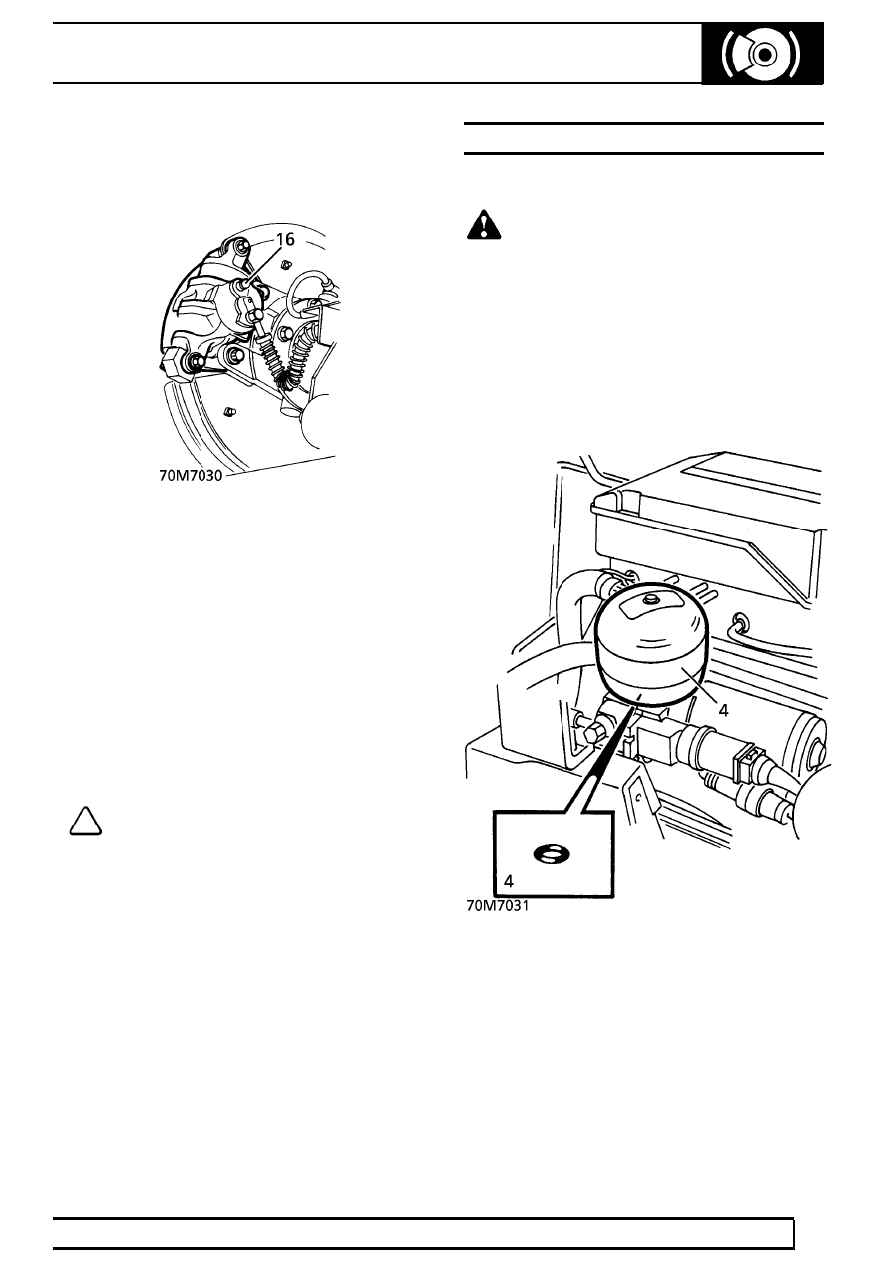Range Rover. Manual - part 204

ABS
3
REPAIR
16. Bleed each rear caliper, driver’s side caliper first,
as follows: Open bleed screw, depress brake
pedal slowly and progressively.
17. Switch on ignition for 4 seconds. Switch off
ignition for 4 seconds. Repeat until fluid is clear
of air bubbles.
18. Switch off ignition, close bleed screw, release
pedal.
19. Switch on ignition, wait for ABS pump to stop
running. Press brake pedal down firmly and fully
release it five times.
20. With ignition on, repeat front caliper bleed
instructions 9. to 12. Use only the lower two
thirds of pedal travel when bleeding.
21. Repeat instruction 19.
22. Check/top up reservoir fluid level,
See this
section.
NOTE: If ABS pump makes a ticking noise
when running during this procedure,
repeat instructions 13. to 19. When the
bleed procedure has been successfully
completed, the ABS pump will not make any
ticking noises.
ACCUMULATOR
Service repair no - 70.65.21
WARNING: The accumulator is precharged
with nitrogen at a pressure of up to 80 bar
(1160 lbf/in
2
). Handle with extreme caution.
DO NOT puncture or burn if disposal is necessary.
Remove
1. Disconnect battery negative lead.
2. Depressurise system.
See this section.
3. Position cloth beneath accumulator to catch any
fluid spillage.
4. Remove accumulator. Discard ’O’ ring.